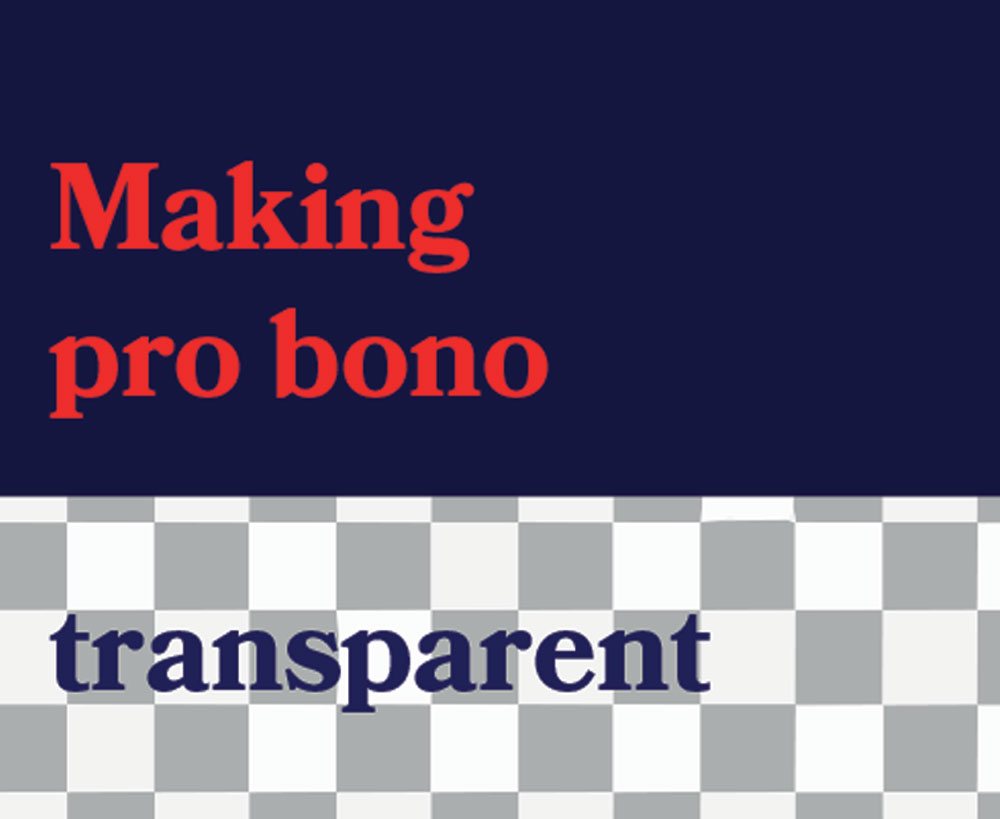Given your experience in having studied mechanical engineering and then working as a space engineer at NASA, why then did you decide to study law and pursue a legal career?
Law was not a career track for me when I was an undergrad. I really did see myself working as an engineer and actually continuing on the path in engineering all the way through to a doctorate degree. However, what I found when I got into practice working at NASA was that the work was exciting, but it just wasn’t the right fit for me.
So, I looked at different options, including business school. Even then, law was not one of my considerations until I was visiting my uncle in Rochester, who worked at Xerox as one of their chief inventors, and he suggested I come into the office and meet the patent attorneys there. Talking with them and learning about how they use their science backgrounds in combination with their advocacy skills was somewhat of a revelation. I didn’t know that was a career option, and that’s what put me on the path to law school. I was at Xerox in January, sat for the last possible LSAT exam you could sit for to apply to law school, then I applied, and six or seven months later started law school.
Even through law school and up until I summered at Finnegan, I still wasn’t convinced it was the right decision for me. But at Finnegan I got to see how it worked in practice and how I could marry science and the law, and it was truly a perfect fit for me.
“We work hard to remember and remain guided by the vision of the two founders of the firm, Marc Finnegan and Doug Henderson”
You started as an associate with Finnegan in 1997 and made partner in 2006. Would you say the managing partner role or a senior firm leadership position was something you aspired to?
It’s somewhat similar to the law school example in that law firm leadership was not on my radar. When I made partner in 2006, I mostly focused on litigation in the district courts and the US International Trade Commission (ITC), and I was thoroughly enjoying my practice.
What happened was, about a year after I made partner, I spoke to our managing partner about some diversity initiatives and ideas I had about what we could do to complement our existing diversity and inclusion efforts. When I had that conversation, I thought I was passing those ideas on to management for management to implement them. But our managing partner said he liked the ideas and wanted me to lead our efforts as the firm’s first diversity and inclusion chair. So, that was essentially my entrée into leadership.
I spent about four years in that role, and found that over time I really enjoyed creating and implementing strategies. After serving as the diversity chair, I then had the opportunity to lead the firm’s mechanical practice group. From there I transitioned to join the management committee. Each subsequent role was a three-year term and a distinct model to Finnegan’s leadership development. During that time of experiencing different areas of leadership within the firm, it really gave me a chance to learn the different aspects of the firm – including our talent and our business. It wasn’t aspirational, it was more transitional in the same way as you go from being a junior associate to being the first chair litigator.
You mention D&I so we will come back to that in more detail. First, how would you define the culture at Finnegan?
We take our culture somewhat seriously – and I am sure all firms are the same way. For us, we work hard to remember and remain guided by the vision of the two founders of the firm, Marc Finnegan and Doug Henderson. Doug would often say their goal was to create a first class, full-service intellectual property law firm that produces top quality work in a collegial and enjoyable atmosphere. So it is not just that we are recognised as a leader in intellectual property, but we want to ensure that we work in an enjoyable environment. We are equally as proud of the recognition we get within the legal industry for our expertise as we are for our quality of life and the way that the attorneys and the staff value working at the firm.
We have tried to maintain this over time as we have grown. We now have ten offices, though we try not to operate as ten separate offices – we operate as one firm and look at our clients as firm clients who have available to them the full expertise of the firm. We look to maintain the same culture and sustain an environment of high-quality work, collegiality, teamwork, and respect. Something that Doug used to talk about, and something that you really start to understand as you get more senior in your practice, is that it is a circle: you strive for good clients who give you good work, and that good work allows you to employ good attorneys, and those good attorneys again allow you to get the good clients with the good work… and the circle continues!
What are your main areas of focus as managing partner?
When I stepped into this role, I was somewhat blessed as the firm has long had a reputation as a leader in intellectual property. So, for me, one of the primary goals is to maintain and grow Finnegan’s reputation in that regard.
What I also wanted to do, even though I had the opportunity to gain management experience in previous roles before becoming managing partner, is learn all aspects of the business, particularly related to the other parts of the firm that I didn’t previously have exposure to, and I wanted to meet all of the members of the firm. I started by meeting the partners and attorneys, but then I met with all of the different departments within the firm. For example our paralegal department, our IT department, and our secretarial department. I am still going through that process of meeting the departments and introducing myself. I give them a bit of my background and we discuss the strategies the firm has implemented, and the strategies that we will implement, so that everyone can be a part of one team and work together to achieve our singular goal of ensuring we are giving our clients the best work product we can in the most efficient way.
Important to IP, we are a technology firm, and we have nearly 300 lawyers that are focused on a variety of technical issues. So, another natural area of focus for our business is to leverage technology. We are looking at continued opportunities for efficiencies in the way that we deliver our legal services, and we are using technology to better manage our existing knowledge. It is all geared towards strengthening relationships with clients so we can share that knowledge more efficiently.
In working with clients, we are looking for ways in which to continue strengthening our partnerships with them. Not just on the legal services we provide, but also in the pro bono work that we do. We are starting to look at some opportunities for joint pro bono with our clients. In the area of diversity and inclusion we are also looking for more opportunities to work with clients to improve the diversity of the legal industry as a whole and not just at our firm. Often, depending on the size of an internal legal group, you may not have the bandwidth to manage a pro bono programme, or to manage some of the diversity and inclusion initiatives, but if these are things we are already doing as a firm then it is a natural fit to invite our clients to join us in these opportunities. If we have the infrastructure set up, it just makes sense to include our clients as we know these are efforts that are important to them as well.
“Overall, it is a balance of ensuring the consistency and stability that has allowed us to stay at the top, while looking for opportunities to create improvements along the way”
In the months since you have taken on the managing partner role, what changes have you made already, or what changes do you plan to make?
I am trying to balance the consistency and stability of the firm, which has helped us enjoy the reputation that we have had for many years, with introducing opportunities and ways to improve. We have implemented some changes already and many of these deal with the evolution in the industry in general, as well as feedback we get from our clients. They tend to revolve around improving the client service experience, which may include delivering some of our services through the use of technology, creating different formats for client engagement and communication, and knowing our client’s business to stay ahead of emerging client needs.
Management has tried to provide different tools within the firm to achieve these goals in terms of creating a knowledge management team, a pricing and budgeting team, and different platforms to partner with clients on the D&I or pro bono initiatives of the firm.
Because we are a firm focused on virtually all areas of technology we are looking at our internal structure, which has been tied broadly to industries, and are considering sub-groups to really showcase our technical expertise as well as our legal experience across those different areas. Overall, it is a balance of ensuring the consistency and stability that has allowed us to stay at the top, while looking for opportunities to create improvements along the way.
In light of all of that, how much time do you spend on client work versus on your managing partner responsibilities? And how do you balance them?
That certainly is a balance! We are not a firm of just one attorney or a management team of just one, and that works for both my billable practice and my efforts to manage the firm.
In terms of my billable practice, I work in teams, and what I have had to do is be more selective in the matters I take on. These are matters where I am more intimately involved, creating and implementing client strategies. From a billable practice perspective, in the past, if we were to talk about litigation, I may have been involved in eight to ten litigations at one time. Now, the number may be three to four. As for balancing the management of patent prosecution portfolios, I am also looking to other team members to help at times.
That same team approach applies in terms of management of the firm. We have a lot of different management teams, and I try to work with different groups to develop strategies and manage the implementation of those strategies. It may involve a different leadership group within the firm depending on the strategy. We have a management committee, we also have our coordinating committee where practice group leads are involved, and we have industry sub-groups that have leads as well, as well as a pro bono coordinator and a diversity and inclusion chair. So depending on the initiative that I am working on, I am always working with a team.
What I find with my practice now is that balance of client work with managing partner responsibilities changes over time. In October, I had a trial in Delaware, so there was a period during the trial when I had to lean more heavily on other members of the firm who are also in management positions, including our firm chair. Typically, the managing partner transitions to chair, so the person in the chair role was recently in the managing partner role and understands the responsibilities well. While I was at trial, I was able to share responsibility with Mark Sweet, our current chair.
Then, there are also times in the year when management responsibilities become greater – whether it is partner compensation, new partner admissions, or other things – and those are situations in which I will be more involved in the management activities and leaning on members of the client teams to make sure we are continuing to implement our client strategies. It’s a balance, and there are times when it is more challenging, but so far the balance has worked out.
“My hope is that all managing partners put great emphasis and focus on D&I efforts. For me, it is in my DNA already, so it is about continuing to improve on what we have been doing and looking for opportunities to partner with industry because this is an initiative that law firms can work together on, as well as with clients”
Since becoming managing partner, what (if anything) has surprised you the most within the firm itself and/or externally in the wider legal market?
Internally at the firm I’ve always known we had a great staff – something we have prided ourselves on over the years is not just hiring the best lawyers but hiring the best staff as well – but in the role I have now, the opportunity to work with the different chiefs and directors within the firm has increased, and I have been truly amazed by the talent that we have in all of our different departments. Working with them has really been a pleasure because they also understand the culture we talked about earlier and our business model, and when we meet one-on-one or have larger chief or director meetings it has been amazing to be more immersed in the creativity, solutions, and approach from those groups. I knew we had a great staff, but it has still been enlightening to work with them.
Externally, because I have had different management positions, I have been attuned to what is happening in the legal industry over the past few years. I try to stay abreast of the different trends in the industry either on the client side or the law firm side. I am now spending more time in that area. I think the surprise for me was when I went to my first managing partner meeting at the national scale. It really reminded me that you can sometimes live in a bubble. Within Finnegan, our management team is diverse. I am sitting here as the managing partner and our management committee is 66% diverse in terms of attorneys of colour and women attorneys. But going to that first national managing partner meeting was a quick reminder that, at least at this level of managing partner, there is not that same diversity. In a large conference room of AmLaw 100 or AmLaw 200 firms, I could quickly and easily pick out the partners of colour. I knew this was the case, but to see it was something different.
That leads well to the next question I was going to ask, which is what significance do you place on the fact that you are the first managing partner of colour within Finnegan?
I would refer back again to that national managing partner conference because that is where it really hit home. You really start to recognise that it is rare for an attorney of colour at a top law firm to be serving as managing partner. For me, it shows the firm is open in creating a pipeline that supports diversity and inclusion. It is not just me as managing partner; as I mentioned, we have a diverse management committee. To achieve that requires pipelines and efforts.
Whether you are an attorney of colour, a woman, a member of the LGBTQ community, or any group that is traditionally underrepresented in the law firm space, you look around and see who is in the leadership positions. I find that the new generation of attorneys coming out of law school are much more aware of diversity as a whole and understand the value of diversity in terms of diversity of ideas and coming to better solutions as a result. I think part of the significance also is having attorneys at the firm see that there is an opportunity within the management ranks, if that is something that interests them.
I knew taking on this role was going to require me to sacrifice certain areas of my legal practice, but because of those areas of significance, I felt it was important not just for us as a firm, but also for the industry in general. The hope is, in years from now at that national managing partner meeting, the room will look a little different.
So, to add to that, what do you think your role is in furthering the firm’s D&I efforts? And do you think you have more responsibility for this as managing partner?
As far as my management style goes, I try to place the other leaders and attorneys within the firm in positions to succeed. For me it is more about the initiatives that get implemented and succeed instead of whether I or someone else gets credit for them.
We have an excellent diversity and inclusion chair who just stepped into the role in July 2019, when I took on my current role. Her name is Mareesa Frederick, and she is one of the ITC experts at the firm. She started her career here and then went to work at the ITC for five years before returning to the firm.
Years ago, I worked with Mareesa on an initiative to try to increase the number of black attorneys in the field of intellectual property. In the area of patents, you are taking someone with a science degree, who then (in what some would call a stark shift) decides to go to law school. Like myself, that was not even known as a career path to most. Our DC office is not too far from Howard University – a historically black university – where my father studied as well as some of my uncles. We asked if we could teach a class on patent law to expose them to it. It doesn’t mean the students are necessarily going to go on to become patent attorneys, but even if they stay on their current course they will come across patent law as engineers. So, we taught that course for a number of years and there are IP attorneys in the field today that have taken that career path through the course we taught at Howard University.
Within the firm on the recruitment side, Mareesa has already had ideas for a few D&I initiatives that we have started to implement. This year we started a secondee programme for first-year law students, where a first-year summer associate will work at the firm for a number of weeks, and then they will spend another portion of the summer working in-house. We are partnering with a number of companies near a Finnegan office on this programme.
On the retention aspect, which I would say is even more important right now to ensure you are advancing people within their careers, another initiative which Mareesa proposed to the management committee, which we are going to move forward with, is for our diverse junior to mid-level attorneys to partner with members of the management committee to receive mentorship and guidance in the areas of law firm leadership.
Those are a couple of the things we are doing now, and I look forward to more initiatives coming through D&I and pro bono, as well as through pricing and knowledge management, and giving different leaders at the firm the opportunity to succeed and support them.
As far as having more responsibility as managing partner goes, my hope is that all managing partners put great emphasis and focus on D&I efforts. For me, it is in my DNA already, so it is about continuing to improve on what we have been doing and looking for opportunities to partner with industry because this is an initiative that law firms can work together on, as well as with clients. It is not something we should be competing on.
Final question: how do you think Finnegan is differentiated from your competitors?
Looking at Finnegan and who we compete against in the intellectual property space, we are distinctly different. We are a firm that is focused solely on intellectual property, and it has been our practice now for 55 years. We have nearly 350 professionals who are all focused on intellectual property, over 300 of whom have scientific degrees and most with advanced scientific degrees.
Some of our competitors may have a broader service of offerings, and intellectual property is just one of those. For Finnegan, IP is our practice. For each of the areas that fall under the intellectual property umbrella, we have been identified as leaders – whether it is litigation, prosecution, or counselling, and whether it is patents, trademarks, copyrights, or trade secrets.
One of the areas where I really feel we may be different than some of our competitors is in the types of experiences we look to give our attorneys. Because our practice is wholly IP, we make sure our attorneys have experience in the different areas of intellectual property. Often there can be separation between the prosecution side of the practice, which is the obtaining of the IP, and the enforcement side, which often results in litigation. Some firms have their attorneys choose one track over the other. We encourage our new attorneys to get experience in all areas of the litigation and transactional work. After they have experience in the different areas, we allow them to choose the kind of practice they want. For some that may be a blended practice, for others it is either as a litigator or a prosecutor.
As we see it, if you choose to become a litigator, knowledge of the process and what it takes to get a patent or trademark allows you to see things differently and become a stronger litigator. If you choose the path of prosecutor in terms of patent or trademark applications, knowing what is going to happen later to that patent or trademark really changes your approach to how you communicate with the US Patent and Trademark Office in terms of the statements you make to get that IP allowed. We believe that experience is very different from what you can get from any CLE or training class.
For us, nothing beats real-life experience. I think this has helped us to remain a leader in the intellectual property space.








